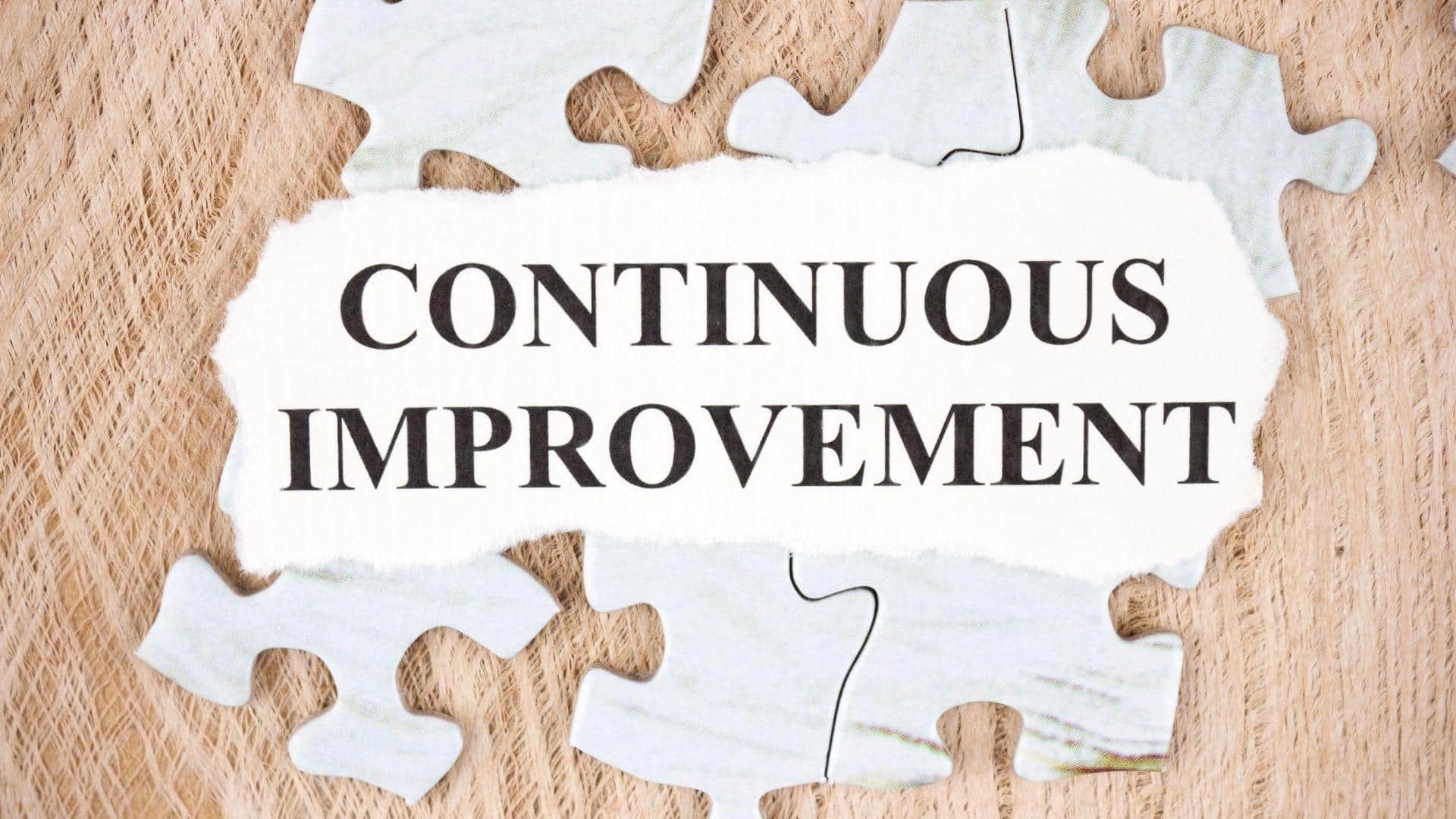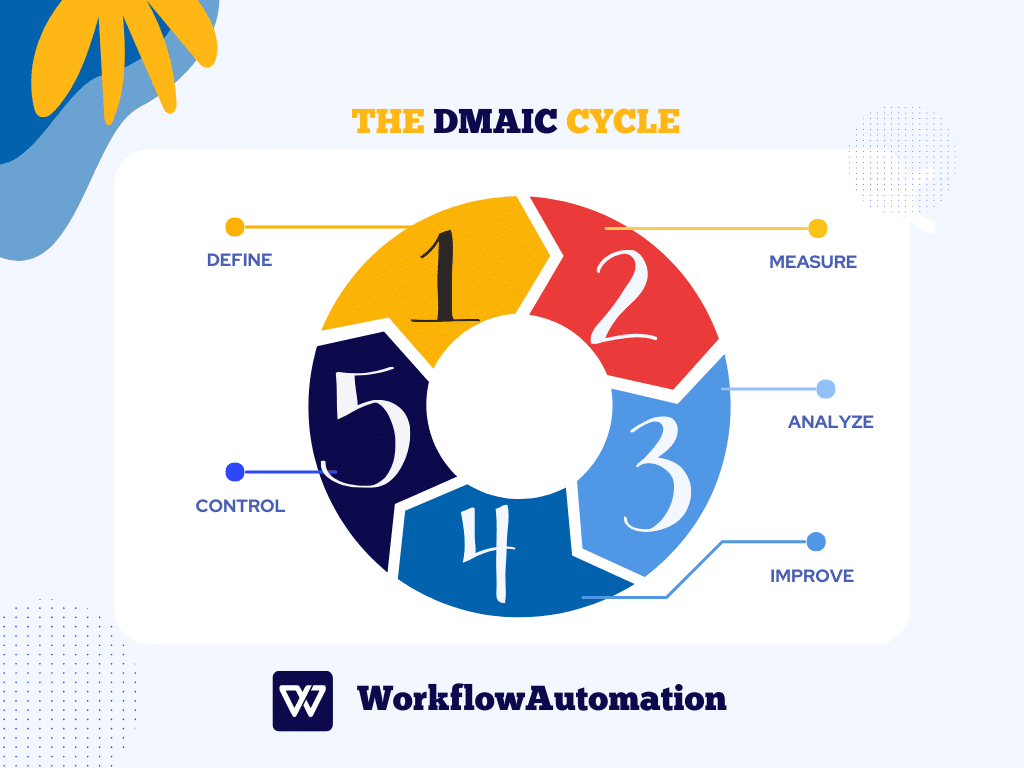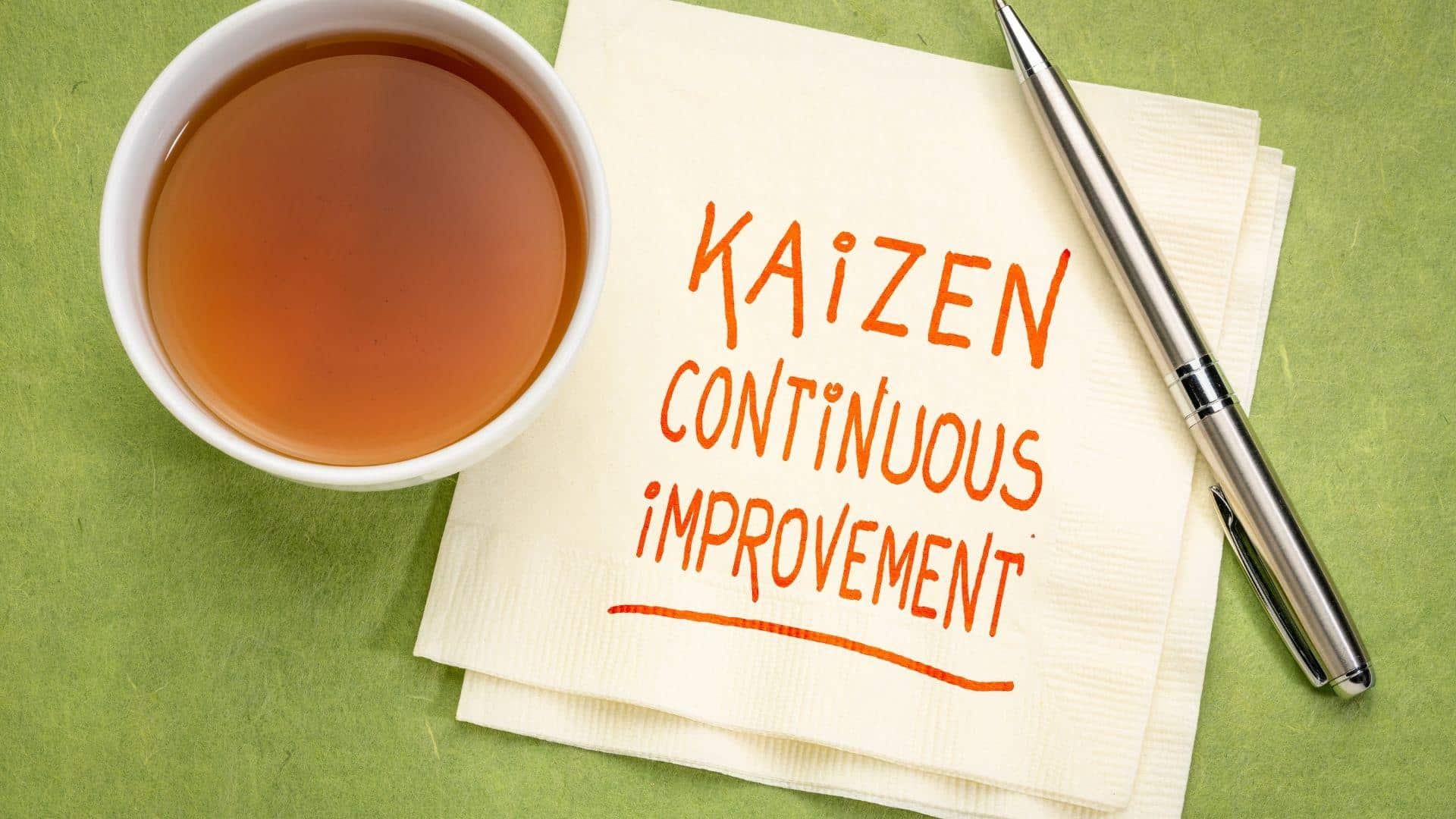It is a universally acknowledged principle that we should consistently seek improvement and progress, striving to give our best, thereby fostering continuous improvement.
However, genuinely embodying the principle of continuous improvement isn’t a process involving occasional progress or the efforts of a few employees. No, this process actually entails a substantial and lasting transformation that occurs daily but yields long-term results.
So, despite the widespread awareness of the significance of continuous improvement, actualizing it necessitates more than mere acknowledgment; it requires decisive action.
Let’s dive into the following sections, where we will explore what it means to fully implement this principle, the methodologies supporting it, and how to achieve its successful implementation.
What is Continuous Improvement?
We’ll begin with the continuous improvement definition to find out what this term really means before diving into specific details.
Continuous improvement represents a workstyle where the idea is to continually push the boundaries of every aspect of your business—whether it’s enhancing the skills of your employees, refining your operational processes, or improving product quality. The key is to avoid passivity in work and comfort zones and ensure daily progress.
In other words, continuous improvement aims to cultivate a working culture that believes there is room for improvement and a commitment to refining and enhancing every aspect of products or services consistently.
This approach involves the ongoing analysis of the current situation, recognizing areas that can be fine-tuned and upgraded, and fostering a proactive attitude towards making those improvements.
Let’s take the Toyota production system to exemplify this philosophy. This production system emphasizes the valuable contributions of workers, the significance of on-time delivery to reduce storage costs, and the application of techniques to minimize errors and ensure top-tier quality, which is what continuous improvement is all about.
So, with this fundamental principle in place, you learn to consistently seek ways to improve your daily work and adapt to changing circumstances, refine your operations, reduce waste, enhance product quality, and increase efficiency.
Fundamentals of Continuous Improvement
Let’s delve into the fundamental ideas that drive the continuous improvement process to gain a better understanding of how it works.
#1. Employee Input is Valuable
Continuous improvement recognizes that employees have valuable insights. Their firsthand experience with the day-to-day operations that involve many procedures, protocols, and best practices and expertise make them invaluable contributors to process improvement.
Employees are familiar with the challenges they face in their roles and can identify pain points and areas where changes can lead to enhanced productivity or better results. By encouraging and respecting their input, organizations harness the collective intelligence of their workforce to drive progress.
#2. Incremental Changes Are Important
When you have minor but constant changes, you can provide more precise cause-and-effect relationships, learn from your mistakes with minimal impact, and build substantial and impactful improvements.
On the other hand, with massive changes, there’s limited opportunity to thoroughly test and refine the new processes or systems before full implementation. So, have a step-by-step approach to ensure each change is carefully considered, well-tested, and refined before rolled out on a larger scale.
#3. A Culture of Adaptation is Involved
In a culture of continuous improvement, organizations create an environment of adaptation where employees are actively engaged in shaping the evolution of processes and practices.
This culture encourages employees to be adaptable and open to change. They actively seek opportunities to adjust and refine their work methods in response to shifting demands and the dynamic nature of their industry.
#4. Regular Reviews Are Encouraged
Continuous improvement thrives on regular check-ins—periodic assessments or reviews conducted by individuals or teams. They provide an opportunity to see how well the proposed changes work and whether they achieve the desired results.
Consistent evaluation of processes, results, and employee feedback keeps improvement efforts on track. These reviews act as milestones, helping organizations make necessary adjustments and stay aligned with their goals.
#5. Data-Driven Decision-Making is Important
By collecting, analyzing, and acting on relevant data, organizations make informed choices that lead to more effective improvements. This is why continuous improvement relies on data-driven decision-making.
Data provides the evidence needed to identify concerns, measure progress, and validate the impact of changes.
#6. Open Communication and Collaboration Are Vital
Open communication and collaboration are essential in a thriving continuous improvement environment. Encouraging teams and individuals to share their observations, ideas, and challenges creates transparency.
This flow of information fosters collaborative problem-solving and innovation, helping organizations overcome obstacles more effectively.
Methods of Continuous Improvement
To experience the benefits of implementing continuous improvement, it’s essential to have an appropriate approach to the measures you’ll undertake, and the following continuous improvement methodologies can help with this: Lean, Six Sigma, and Kaizen.
In brief, Lean focuses on eliminating waste and optimizing processes, Six Sigma relies on data-driven strategies to reduce defects and process variations, and Kaizen encourages small, incremental improvements involving all employees.
Each of them is based on different principles, yet they are considered ideal methods for achieving continuous improvement. Let’s now uncover more details about each of them so you can determine which one aligns with your requirements and needs best.
Lean Methodology
Lean project management methodology is about improving processes to maximize the efficiency and quality of products and services while reducing waste. Lean incorporates the following five principles:
- Identifying Value: This means understanding what the customer sees as value in your product or service. Anything else is considered waste.
- Mapping the Value Stream: This involves creating a detailed map of all the steps in your process, starting from the initial materials and extending to the final product. It helps in visualizing where waste might occur.
- Creating Flow: Lean seeks to establish a smooth, uninterrupted workflow, which reduces waiting times and bottlenecks.
- Establishing Pull: Instead of pushing products through the process, Lean encourages the production of items only when they are needed, based on customer demand.
- Continuous Improvement: Lean is all about never-ending improvement, and this is where the Plan-Do-Check-Act (PDCA) cycle comes into play.
This PDCA continuous improvement cycle is a fundamental part of Lean methodology. It’s a four-step management method used for the continuous improvement of processes and products. Here’s how it works:
- Plan: The planning stage is where the issue or bottleneck is recognized, goals are established, and actionable steps are mapped out. Creating a plan is similar to drawing out directions to your destination.
- Do: This is the implementation phase. You carry out the plan, making the necessary changes in a controlled and monitored manner. It is like taking a journey following the roadmap you have created.
- Check: In this phase, you assess the results of your changes and compare them to previously established objectives to see if they align.
- Act: Based on the results in the Check phase, you take appropriate actions. If the changes are successful, you integrate them into your standard procedures. If not, you refine the plan and repeat the cycle.
By employing this approach, you achieve what lies at the core of this methodology: process optimization, waste reduction, and the delivery of higher-quality services and products to the customers.
Six Sigma Methodology
Six Sigma is a data-driven methodology for continuous improvement whose goal is to minimize defects and variations in processes and make them more stable. What you need to know about Six Sigma is that it is based on a structured approach known as DMAIC, which stands for Define, Measure, Analyze, Improve, and Control.
Here is how it works:
- Define: This is where you pinpoint the problem and set clear objectives that should be specific, measurable, and achievable. It is recommended to include project stakeholders who are impacted by the issue and involve them in the process so everyone can be on the same page.
- Measure: Start by gathering relevant data and information about the selected process and quantify the extent of the issue. You can also create a visual map of the process, which aids in understanding how it works and where improvements are needed.
- Analyze: This step is the heart of the Six Sigma methodology. Through statistical analysis, you dig deep into the data to identify patterns, trends, and root causes of the problem.
- Improve: In this phase, potential solutions are devised to address the root causes identified in the previous phase. Solutions are tested on a smaller scale to ensure they work as intended before full implementation.
- Control: In the final phase, you establish standardized processes and procedures to maintain the improvements. Also, keep in mind to regularly monitor established processes so you can remain on track and within the desired range of performance or quality standards.
Kaizen Methodology
Kaizen, which means “change for better” in Japanese, is a systematic approach to success. It encourages organizations to make minor, methodical, continuous improvements in every aspect of business (processes, products, or services). Let’s see some of Kaizen’s typical continuous improvement examples:
- Valuing People: In the realm of Kaizen, every employee assumes a crucial role by prioritizing the wealth of expertise, knowledge, and ideas within the team.
This approach aims to awaken and empower individuals, instilling the confidence to express themselves, recognize their unique contributions, and ultimately foster a dream team mentality. This results in a work environment brimming with trust and motivation.
- Reducing Waste: Kaizen advocates a structured and thoughtful approach to resource utilization, aiming to maximize efficiency and minimize waste. To achieve this aim, identify areas where you can enhance operational efficiency, eliminate errors, and streamline processes. This process occurs gradually, with continuous analysis and adjustment.
- Step-by-Step Progress: The Kaizen mantra is simple: small, consistent steps pave the way for substantial accomplishments. To reach meaningful transformation, this methodology strongly emphasizes devising a continuous improvement plan, fostering an environment of ongoing planning and evaluation to chart a path toward established goals. The focus is not on the distant target but on daily achievements, ensuring the journey is as rewarding as the destination.
How to Implement Continuous Improvement
Now, we come to the most important part, which includes the steps to implementing continuous improvement. Although this is not an easy task and requires a lot of work and effort, the following six steps will make your journey to implementing continuous improvement easier:
#1. Analyze Current Processes
To kick things off, delve deep into how your organization’s processes currently operate. This step requires a comprehensive examination of each step, from start to finish, and gathering relevant data. However, it’s not just about the technical side; it’s also about involving the people who work with these processes daily.
Employees often have unique insights into the real-world operation of these processes. The goal is to understand how things work in practice, not just how they’re designed to work on paper.
#2. Identify Areas For Improvement
Once you’ve evaluated your processes, identify the areas that could benefit from improvement. This could involve streamlining business processes and workflows, reducing waste, enhancing product quality, or improving customer service.
Make sure these areas align with your organization’s overarching goals and objectives and key results. Not all issues are created equal, so it’s important to concentrate your efforts on those with the most significant impact first. This way, you can achieve visible results quickly, creating momentum for further improvements.
#3. Set Goals
With the areas for improvement identified, set clear, specific, measurable, achievable, relevant, and time-bound (SMART) goals. Goals provide a clear direction for your improvement efforts and help measure progress effectively.
Ensure that these goals are not only realistic but also communicated effectively to all involved parties. When everyone understands the objectives and reasons behind them, they are more likely to actively participate in the improvement process.
#4. Create a Plan to Achieve Them
Now, it’s time to create a detailed plan to reach your improvement goals. This plan should outline the steps to be taken, the responsibilities of each team member, and the necessary resources.
Consider creating a timeline that breaks down the larger goal into smaller, more manageable tasks. In addition, your planning should address potential challenges and risks, ensuring a smoother journey toward improvement.
#5. Monitor Progress
Consistently track your progress toward your improvement goals. Use key performance indicators (KPIs) and data analysis to measure your success.
However, monitoring is not only about numbers; it also includes communication. Keeping all project stakeholders informed about the progress and celebrating small victories along the way can boost motivation, encouraging dedication to the initiative.
#6. Make Adjustments
Continuous improvement is an iterative process. As you monitor progress, be open to making adjustments as needed. If something isn’t working as planned, be ready to change your approach. This flexibility is essential for adapting to unexpected obstacles and maintaining the momentum of your improvement initiatives.
Benefits of Continuous Improvement
Continuous improvement brings some very real benefits that can transform your business. Here are five key advantages of implementing it:
- Enhanced Quality: By always working on improving processes, you end up with better quality services and products. This means customers are happier because they get what they want and often even more than that. Fewer mistakes and defects mean a smoother operation and happier customers.
- Increased Efficiency: When you constantly improve processes, you find ways to do more with the same time and resources. This means less waste and more efficiency, so you get more done with the same effort and save money. And that is good news for the company’s resource management and overall financial performance.
- Better Employee Engagement: Employees are at the heart of making continuous improvement happen. When they are encouraged to suggest improvements and be part of the process, they feel more engaged and happier at work. It’s like a ripple effect that creates a better atmosphere for everyone.
- Improved Customer Satisfaction: When your products or services keep getting better, it makes your customers happy, and that satisfaction can turn into loyalty and referrals. It’s a win-win situation—they stay with you and recommend you highly to others.
- Easier Adaptation to Change: The business world keeps changing, and continuous improvement helps you keep up. Once you implement it, you can adapt to new technology, changing markets, and customer demands, and that adaptability is the key to long-term success.
When to Use Continuous Improvement?
Continuous improvement can work in various market conditions and different industries. To make it clearer, here’s a simple guide on who should use it and when:
- Small and Large Companies: Continuous improvement isn’t just for big corporations; small businesses can benefit from it, too. Small companies often have the advantage of being more flexible, making it easier to implement changes quickly.
Large corporations, on the other hand, can use continuous improvement to enhance complex processes and maintain competitiveness.
- Stable and Changing Markets: In stable markets, continuous improvement helps maintain a competitive edge and fine-tunes operations for efficiency. In changing markets, it is even more critical because it enables companies to adapt swiftly to new customer demands and technological advancements.
- Companies Seeking Growth: Any company aiming for growth can benefit from continuous improvement. It can help expand production, improve customer satisfaction, and increase market share.
- Companies Wanting to Empower Employees: If you want to foster a culture of innovation and engagement, continuous improvement is a smart choice. Empowering employees to suggest improvements can lead to a happier and more motivated workforce.
- Companies During Cost-Cutting Efforts: When a company needs to cut costs, continuous improvement can help identify and eliminate wasteful practices and save money without sacrificing quality.
Conclusion
When your primary focus is on progress, embracing continuous improvement ensures a long journey toward success.
Implementing methodologies like Kaizen, Six Sigma, and Lean lets you recognize that the path to significant achievement is paved with small, deliberate steps in every aspect of work and life.
With our guide, you can begin the process step by step, as we’ve showcased the benefits of this method and how to identify when to implement it. Over time, you’ll see it evolve into a natural work culture and a mindset.







